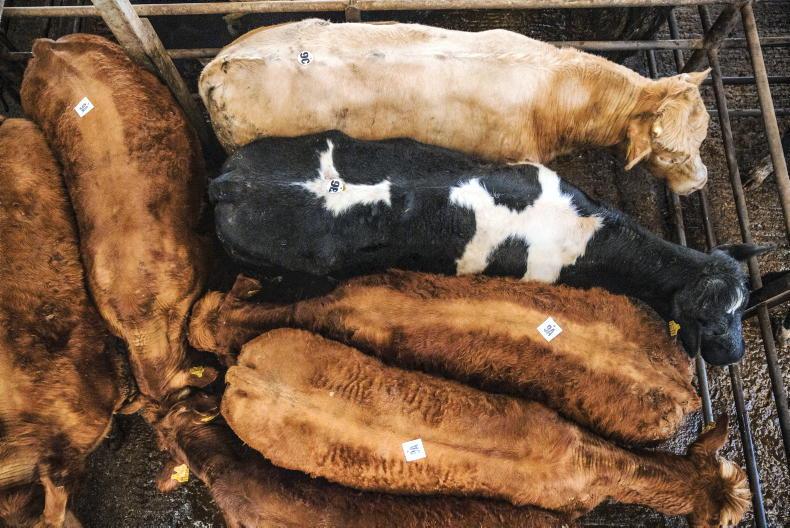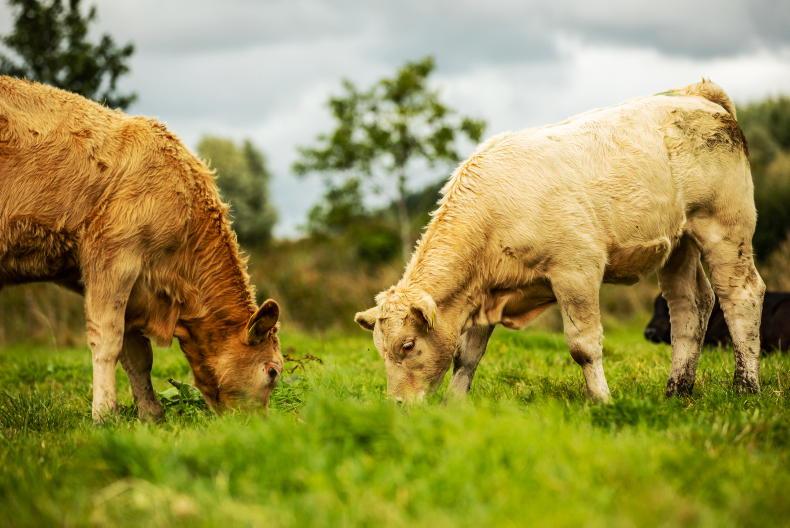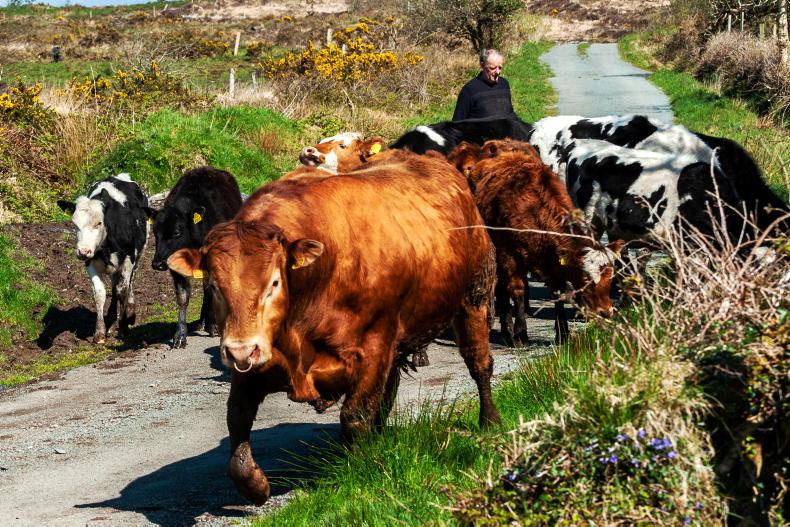Most farmers will now be aware of the multitude of changes involved in the new Common Agricultural Policy (CAP), and the environment-driven ACRES. But there is still a level of confusion and we can all understand why.
In this article, I want to describe what eco-schemes mean for tillage farmers (and indeed all farmers), where they have come from, the options to consider and their financial implications. While the official line is that eco-schemes are voluntary, in reality they are essential from an income perspective.
Start with the basics
Our entitlement values in 2022 were made up of a basic payment (BPS) plus a greening payment. For greening, tillage farmers had to comply with the three-crop rule and environmental focus area (EFA) requirements. So tillage farmers understand the intricacies of these requirements, while grassland farmers did not have to do anything to comply with greening in the last CAP. They did not have to understand it because they had to do nothing to earn it.
Everything has changed for 2023, which started three months ago for many tillage farmers. Firstly, what was technically a support payment based on greening and BPS will involve three payment streams from next year onwards. Existing entitlements (BPS and greening) will be paid via some combination of BISS (the new basic payment), CRISS (the front loading element that gives a higher payment to everyone for their first 30ha only) and an eco-scheme payment.
The latter payment is payable on all hectares farmed, regardless of whether that hectare has an entitlement or not. The stated objective is to reward farmers for undertaking actions deemed beneficial to climate, environment, water quality and biodiversity.
To start with, an entitlement from 2022 is being reduced by 25% to generate a fund to pay for the eco-scheme. It is also being reduced to enable payment of the CRISS, the young farmer payment and the protein aid scheme. These all eat into the current value of entitlements and then convergence and capping cut in.
Convergence has been ongoing since the last CAP and it will continue to adjust entitlement values to push them closer to the national average. To do this, some will increase in value, some will stay the same and others will decrease in value.
The 25% deduction for the eco-schemes is by far the biggest single deduction and it is worth an estimated €77/ha as a flat payment to applicants in the new CAP. The exact value will not be known until all the 2023 applications are in next year, but that is the Department’s best estimate currently. Put simply, a 100ha application would have an eco-payment of around €7,700, so growers must qualify for it.
Qualification
To be eligible for an eco-scheme payment, a farmer needs to submit a BISS application and then fulfil two eco-scheme options, of which there are eight. It is an annual scheme and some actions can be done every year, while others might be taken for one year and then alternated with a different measure. While many tillage farmers are mixed, this article mainly addresses the measures which are options for tillage-only farms.
Space for Nature – This is a notional assessment of farm features which benefit nature and are measured as area devoted to biodiversity, habitats, or landscape features. In many ways, it is like the environmental focus area (EFA) obligations which tillage farmers had in the last CAP, but it includes additional features that were excluded previously. So, the percentages assessed under EFAs are likely to be higher in Space For Nature (SFN). Features for SFN include land lying fallow, hedgerows, drains/ditches, buffer strips, stone walls, ponds, habitats, monuments, scrub, rock, etc. All farmers are obliged to have at least 4% SFN for BISS. However, one eco-scheme measure can be fulfilled by a farmer having at least 7% SFN. But where a farm has at least 10% SFN, this can be used to fulfil two eco-scheme requirements, ie be fully compliant without having to take any other specific actions. By all accounts, many farmers may have at least 7% SFN, or more, and so this is likely to be one of the most widely used measures.
Extensive livestock production – Of no consequence to tillage-only farms.Limiting chemical nitrogen usage – This is mainly a grassland measure, but it can apply to tillage. To qualify, a grower would need to use a farm nitrogen rate of 10% below the national average of 139.41kg N/ha (111.53 units/ac). This may seem low, but it might suit a spring barley grower also growing a legume.Planting of native trees and hedges – The option to plant three native trees per eligible hectare (or 1m of hedgerow) may appeal to some growers. As with the SFN option, if a farmer commits to plant either six native trees or two metres of new hedgerow, or a combination of both, per eligible hectare, this will count as two eco-scheme actions. Use of a GPS-controlled fertiliser spreader or sprayer – This option will suit some growers who have already invested in this equipment for efficiency reasons. All of one’s fertiliser and sprays must be applied using this equipment. Soil sampling and appropriate liming on all eligible hectares – A full farm soil sample set can be used as one option one year in four. So, if used in 2023, it can be chosen again in 2027. This can be a useful option for those who do regular soil tests anyway. As well as taking the samples, the advice on lime application must be followed on the appropriate parcels. Planting break crops – One specific option for tillage farmers is to have at least 20% of the tillage area planted to a prescribed break crop in the year of application. This 20% can be any combination of oilseed rape, oats, peas and beans. This measure might be used in just one year, or in consecutive years if there is 20% or more of these crops. Sowing of a multi-species sward – A measure for grassland. Choosing and using eco schemes
Space For Nature (SFN)
It seems likely that a high percentage of farms may exceed the 7% needed to fulfil one eco-scheme. It is likely that one might need environmental fallow for this to become 10% or greater. As with the EFA in its day, it is important to check all the details provided by the Department to ensure that the percentage indicated is accurate.
If you opt for the 10% or more, it is important that you meet this level at an inspection. However, Department staff qualified that there are tolerances in the implementation for anyone who falls just under the minimum level on inspection.
If an applicant claiming >10% ends up with 9.9%, there will be a deduction but not a penalty. Also, once you fall within the allowed level of margin, you would still qualify for the two eco-schemes but with a small relative deduction.
Limiting chemical nitrogen use
This may interest those with crops that have a low N requirement, such as distilling barley, or malting barley growers who also have a protein crop in the rotation to reduce overall farm nitrogen use.
To qualify, a grower needs to have a maximum farm nitrogen rate of 111.53kg N/ha (89.22 units/ac) or 10% below the national average rate.
Planting native trees and hedges
This might be considered by some who have a love for trees and nature on a once-off basis. Many farms would benefit from this level of tree planting, but it may depend on where they have to be planted. Doubling the rate of planting, i.e six trees per eligible hectare, would fulfil two eco-schemes for that year.
GPS-controlled spreader and sprayer
All fertilisers and sprays must be applied using this equipment. Many larger farms already fulfil this option because it brings efficiencies in its own right. For those with the equipment, this measure can fulfil an eco-scheme every year.
Soil sampling and liming
A useful option for a single year. The full farm needs to be soil sampled, but it can only be used one year in four. Lime application recommendations must be fulfilled on the appropriate parcels.
20% break crops
Many tillage farmers meet this option every year as part of normal farming practice. It is limited by the crops allowed, but these can give more than 20% break crops to many farmers. Given that field size dictates the actual area, be careful not to allow it to drop below 20% in an individual year, or have another eco-scheme option available. The prescribed break crops are oilseed rape, oats, peas and beans.
Eco-schemes are totally separate to ACRES, as the payment received comes directly from the carve up of current entitlements. It is necessary to comply with two eco-schemes to secure full payment, but two options (Space For Nature and tree planting) can be used to fulfil two eco-schemes using the higher thresholds. All eco-scheme options are chosen on an individual year basis, but some can apply every year, such as Space For Nature, GPS equipment and rotation.
Most farmers will now be aware of the multitude of changes involved in the new Common Agricultural Policy (CAP), and the environment-driven ACRES. But there is still a level of confusion and we can all understand why.
In this article, I want to describe what eco-schemes mean for tillage farmers (and indeed all farmers), where they have come from, the options to consider and their financial implications. While the official line is that eco-schemes are voluntary, in reality they are essential from an income perspective.
Start with the basics
Our entitlement values in 2022 were made up of a basic payment (BPS) plus a greening payment. For greening, tillage farmers had to comply with the three-crop rule and environmental focus area (EFA) requirements. So tillage farmers understand the intricacies of these requirements, while grassland farmers did not have to do anything to comply with greening in the last CAP. They did not have to understand it because they had to do nothing to earn it.
Everything has changed for 2023, which started three months ago for many tillage farmers. Firstly, what was technically a support payment based on greening and BPS will involve three payment streams from next year onwards. Existing entitlements (BPS and greening) will be paid via some combination of BISS (the new basic payment), CRISS (the front loading element that gives a higher payment to everyone for their first 30ha only) and an eco-scheme payment.
The latter payment is payable on all hectares farmed, regardless of whether that hectare has an entitlement or not. The stated objective is to reward farmers for undertaking actions deemed beneficial to climate, environment, water quality and biodiversity.
To start with, an entitlement from 2022 is being reduced by 25% to generate a fund to pay for the eco-scheme. It is also being reduced to enable payment of the CRISS, the young farmer payment and the protein aid scheme. These all eat into the current value of entitlements and then convergence and capping cut in.
Convergence has been ongoing since the last CAP and it will continue to adjust entitlement values to push them closer to the national average. To do this, some will increase in value, some will stay the same and others will decrease in value.
The 25% deduction for the eco-schemes is by far the biggest single deduction and it is worth an estimated €77/ha as a flat payment to applicants in the new CAP. The exact value will not be known until all the 2023 applications are in next year, but that is the Department’s best estimate currently. Put simply, a 100ha application would have an eco-payment of around €7,700, so growers must qualify for it.
Qualification
To be eligible for an eco-scheme payment, a farmer needs to submit a BISS application and then fulfil two eco-scheme options, of which there are eight. It is an annual scheme and some actions can be done every year, while others might be taken for one year and then alternated with a different measure. While many tillage farmers are mixed, this article mainly addresses the measures which are options for tillage-only farms.
Space for Nature – This is a notional assessment of farm features which benefit nature and are measured as area devoted to biodiversity, habitats, or landscape features. In many ways, it is like the environmental focus area (EFA) obligations which tillage farmers had in the last CAP, but it includes additional features that were excluded previously. So, the percentages assessed under EFAs are likely to be higher in Space For Nature (SFN). Features for SFN include land lying fallow, hedgerows, drains/ditches, buffer strips, stone walls, ponds, habitats, monuments, scrub, rock, etc. All farmers are obliged to have at least 4% SFN for BISS. However, one eco-scheme measure can be fulfilled by a farmer having at least 7% SFN. But where a farm has at least 10% SFN, this can be used to fulfil two eco-scheme requirements, ie be fully compliant without having to take any other specific actions. By all accounts, many farmers may have at least 7% SFN, or more, and so this is likely to be one of the most widely used measures.
Extensive livestock production – Of no consequence to tillage-only farms.Limiting chemical nitrogen usage – This is mainly a grassland measure, but it can apply to tillage. To qualify, a grower would need to use a farm nitrogen rate of 10% below the national average of 139.41kg N/ha (111.53 units/ac). This may seem low, but it might suit a spring barley grower also growing a legume.Planting of native trees and hedges – The option to plant three native trees per eligible hectare (or 1m of hedgerow) may appeal to some growers. As with the SFN option, if a farmer commits to plant either six native trees or two metres of new hedgerow, or a combination of both, per eligible hectare, this will count as two eco-scheme actions. Use of a GPS-controlled fertiliser spreader or sprayer – This option will suit some growers who have already invested in this equipment for efficiency reasons. All of one’s fertiliser and sprays must be applied using this equipment. Soil sampling and appropriate liming on all eligible hectares – A full farm soil sample set can be used as one option one year in four. So, if used in 2023, it can be chosen again in 2027. This can be a useful option for those who do regular soil tests anyway. As well as taking the samples, the advice on lime application must be followed on the appropriate parcels. Planting break crops – One specific option for tillage farmers is to have at least 20% of the tillage area planted to a prescribed break crop in the year of application. This 20% can be any combination of oilseed rape, oats, peas and beans. This measure might be used in just one year, or in consecutive years if there is 20% or more of these crops. Sowing of a multi-species sward – A measure for grassland. Choosing and using eco schemes
Space For Nature (SFN)
It seems likely that a high percentage of farms may exceed the 7% needed to fulfil one eco-scheme. It is likely that one might need environmental fallow for this to become 10% or greater. As with the EFA in its day, it is important to check all the details provided by the Department to ensure that the percentage indicated is accurate.
If you opt for the 10% or more, it is important that you meet this level at an inspection. However, Department staff qualified that there are tolerances in the implementation for anyone who falls just under the minimum level on inspection.
If an applicant claiming >10% ends up with 9.9%, there will be a deduction but not a penalty. Also, once you fall within the allowed level of margin, you would still qualify for the two eco-schemes but with a small relative deduction.
Limiting chemical nitrogen use
This may interest those with crops that have a low N requirement, such as distilling barley, or malting barley growers who also have a protein crop in the rotation to reduce overall farm nitrogen use.
To qualify, a grower needs to have a maximum farm nitrogen rate of 111.53kg N/ha (89.22 units/ac) or 10% below the national average rate.
Planting native trees and hedges
This might be considered by some who have a love for trees and nature on a once-off basis. Many farms would benefit from this level of tree planting, but it may depend on where they have to be planted. Doubling the rate of planting, i.e six trees per eligible hectare, would fulfil two eco-schemes for that year.
GPS-controlled spreader and sprayer
All fertilisers and sprays must be applied using this equipment. Many larger farms already fulfil this option because it brings efficiencies in its own right. For those with the equipment, this measure can fulfil an eco-scheme every year.
Soil sampling and liming
A useful option for a single year. The full farm needs to be soil sampled, but it can only be used one year in four. Lime application recommendations must be fulfilled on the appropriate parcels.
20% break crops
Many tillage farmers meet this option every year as part of normal farming practice. It is limited by the crops allowed, but these can give more than 20% break crops to many farmers. Given that field size dictates the actual area, be careful not to allow it to drop below 20% in an individual year, or have another eco-scheme option available. The prescribed break crops are oilseed rape, oats, peas and beans.
Eco-schemes are totally separate to ACRES, as the payment received comes directly from the carve up of current entitlements. It is necessary to comply with two eco-schemes to secure full payment, but two options (Space For Nature and tree planting) can be used to fulfil two eco-schemes using the higher thresholds. All eco-scheme options are chosen on an individual year basis, but some can apply every year, such as Space For Nature, GPS equipment and rotation. 









SHARING OPTIONS